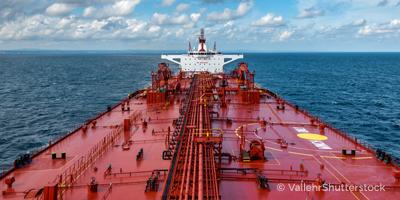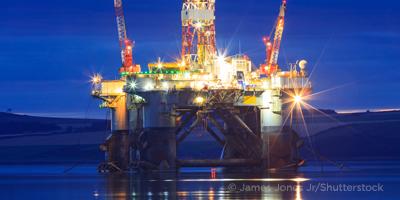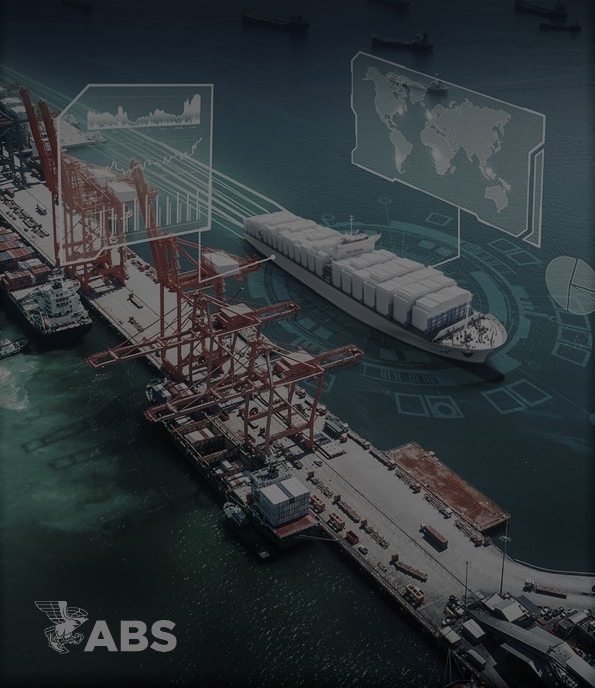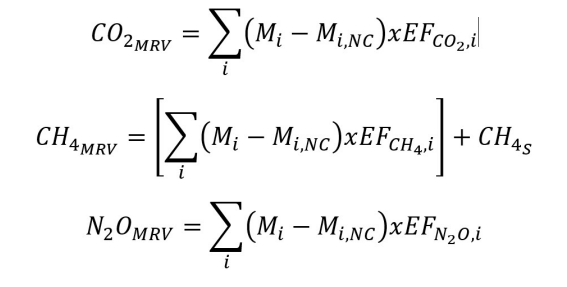How will shipping companies surrender allowances? Is there a single exchange platform that shipping companies will access?
Initially, shipping companies will have to open an account in the Union Registry. To do that they shall send a request to the national administrator of the country that represents their administering authority. That registry keeps track of:
1. Accounts of companies that hold allowances;
2. Transactions of allowances performed by the account holders;
3. Annual verified CO2 emissions;
4. Annual balance between verified emissions and allowances to be surrendered;
5. Member State’s installations covered by EU ETS Directive.
Currently, 25 EU member States and 3 EEFTA countries auction their allowances on a single platform, European Energy Exchange (EEX). Shipping companies will be able to buy and sell allowances into that exchange platform.
Who can bid in the auctions for EUAs?
The following entities have the right to bid in the auctions:
- ETS operators, including aviation operators along with their parent, affiliate, or subsidiary undertakings;
- Business groupings of ETS operators acting on behalf of their members;
- Public bodies or state-owned entities that control ETS operators;
- Investment firms and credit institutions authorized and regulated under EU law. They can bid on behalf of clients provided that they are authorized to do so.
It is important to mention that when investment firms, credit institutions or exempt persons bid on behalf of their clients, their clients must be eligible by themselves to bid.
Can a shipping company get access and start purchasing allowances within 2023?
In order to be able to buy and sell allowances, shipping companies must be registered in the Union Registry. Maritime industry will be included in EU ETS from 1 January 2024; therefore, they will be able to register in Union Registry beginning on that date and they will be able to buy allowances from 1 Jan 2024 onwards.
Can a shipping company purchase and sell allowances within a calendar year?
Operators registered in EU ETS have the right to buy and sell allowances (throughout the calendar year). Their main responsibility is to surrender adequate allowances at the end of the reporting period. In case they have excess allowances, they can keep the spare allowances to cover future needs or sell them to another installation that is short.
For how long are the purchased allowances valid?
According to Article 13 of Directive 2003/87/EC, allowances issued from 1 January 2021 onwards will include an indication showing in which ten year period they were issued and be valid from the first year of that period onwards. Therefore, allowances issued in EU ETS phase 4 (2021-2030) will be valid until 2030.
Is carbon offsetting permitted (e.g. CDMs, JIs) instead of surrendering allowances?
Currently, international credits (financial instruments that represent a tonne of CO2 removed or reduced from the atmosphere) are generated under two mechanisms:
- The Clean Development Mechanism (CDM) which allows industrialized countries to invest in projects that reduce emissions in developing countries as an alternative to more expensive emission reduction installations at their country and;
- Joint Implementation (JI) mechanism that allows industrialized countries to fulfill their required emissions cuts by covering financially the development of projects that reduce emissions in other industrialized countries.
During EU ETS Phase 3 (2013-2020) EU ETS operators could exchange some international credits for EUAs. In the EU ETS phase 4 revision, EU has the target to reduce GHG emissions domestically by at least 55 percent compared to 1990 and does not envisage to continue the use of international credits.
How many allowances will each vessel have?
This depends on the CO2 emissions that fall under EU ETS. Each tonne of ‘EU-taxed’ CO2 is equivalent to one allowance (EUA). The EUA’s price fluctuates during the calendar year and the EU ETS operator can buy as many allowances as he wants throughout the year. He has the responsibility to surrender adequate allowances by 30 September of the following year and upon verification of aggregated emissions by its verifier.
What is the purpose of Market Stability Reserve (MSR)?
The Market Stability Reserve (MSR) began operating in 2019. During the Phase 3 of EU ETS (2013-2020), a surplus of emissions allowances had built up mainly due to:
1. The use of International Credits;
2. The overgenerous Cap;
3. The effect of financial crisis that led to less economic output – less emissions but without reducing the supply of EUAs.
Initially as a short-term measure, the commission proposed to reduce the auctioning volume in 2014 by 400 million, in 2015 by 300 million and in 2016 by 200 million EUAs. These allowances were postponed until 2019-2020. However, these EUAs were later transferred into the MSR. The MSR has two main objectives:
- Regulate the current surplus of EUAs;
- Improve the system’s resilience to major shocks by increasing the supply of allowances to be auctioned.
MSR works on an annual cycle, each year the EC calculates the ‘total number of allowances in circulation’ (TNAC) which represents the oversupply in EU ETS. If that quantity is between 833 and 1,096 million then a number of EUAs equal to the difference of TNAC and 833 million shall be deducted from the volume of allowances to be auctioned and shall be placed in the MSR over a period of 12 months. In case TNAC is more than 1,096 million, the number of allowances to be deducted shall be equal to 12 percent of the TNAC. However, until 2030 that percentage shall be doubled, equal to 24 percent. It must also be mentioned that allowances held in the reserve above 400 million shall be no longer valid.
How are the EU ETS revenues used?
It is up to each member State to decide how the revenue coming from the auctioning of EUAs will be used. According to Article 10 of Directive 2003/87/EC, at least 50 percent of the revenues shall be used for one of the following:
1. To reduce GHG emissions, funding R&D as well as demonstration projects for reducing emissions.
2. To develop renewable energies to meet the commitment of the Union to renewable energies.
3. Measures to avoid deforestation and increase afforestation.
4. Environmentally safe carbon capture & geological storage of CO2.
5. Invest in measures to decarbonize the maritime sector, including the improvement of the energy efficiency of ships, ports, innovative technologies and infrastructure, sustainable alternative fuels, such as hydrogen and ammonia that are produced from renewables and zero-emission propulsion technologies.
6. Provide financial support in order to address social aspects in lower- and middle- income households, including by reducing distortive taxes.
What is the purpose of the Innovation Fund?
The innovation fund was established in 2017 and it is an EU level fund dedicated to economically support the demonstration of innovative low-carbon technologies. These projects shall be at an advanced technology readiness level where the fund can help them make it to the market.
The revenues of the innovation fund come from the auctioning of around 450 million EUAs between 2020 and 2030. These allowances will be increased by 25 million based on the latest EU ETS Revision. Projects that can be financed from the innovation fund include among others:
- Projects for energy intensive industries, projects for Carbon Capture and Utilization (CCU) and Carbon Capture and Storage (CCS), innovative renewable energy and energy storage technologies;
- Investments to decarbonize the maritime transport sector:
- Projects that improve the energy efficiency of ships, ports, short-sea shipping;
- Electrification of the sector;
- Sustainable alternative fuels, such as hydrogen and ammonia produced from renewables;
- Zero-emission propulsion technologies such as wind propulsion;
- Innovations to ice classed ships.
Projects are selected based on a set of criteria. The most important one is the effectiveness in avoiding GHG emissions compared to an already existing technology. The rest in order of priority are the degree of innovation, project maturity, project scalability and cost efficiency.
What is the purpose of the Modernisation Fund?
The modernization fund was established to assist lower – income member States in modernizing their energy sector and improve their energy efficiency. Revenues from the modernization fund are being split as follows:
- 2% of the total quantity of allowances between 2021 and 2030 will be placed in the Modernization Fund in order to fund the improvement of the energy efficiency and energy systems of member States with a GDP per capita at market prices below 60% of the Union Average in 2013;
- 2.5% of the total quantity of allowances between 2024 and 2030 shall be also placed in the Modernisation Fund for the same purpose but for the member States with a GDP per capita at market prices below 75% of the Union Average between 2016 to 2018.
Who will be responsible for reporting and surrendering allowances?
The shipping company is ultimately responsible for purchasing and surrendering allowances at a company level; however, the Directive does recognize their entitlement to be reimbursed by the commercial operators for the emissions costs arising of the vessel’s operations. This will have to be accounted for in the charter party agreements and monitored accordingly by both the charterers and shipping company.
On which vessel types the exclusion of “port of call” in a vicinity of less than 300 nautical miles will be applied?
According to EU ETS Directive “port of call” means the port where a ship stops to load or unload cargo or to embark or disembark passengers excluding stops of containerships in a neighboring container transshipment port. The European Commission (EC) shall by 31 December 2023, establish a list of container transhipment ports. The ports defined in that list will be container transhipment ports where the share of transhipment of containers, measured in twenty-foot equivalent units, exceeds 65 percent of the total container traffic of that port during the most recent 12 month period for which relevant data are available and where that port is located outside the Union but less than 300 nautical miles from a port under the jurisdiction of a member State.
Furthermore, containers shall be considered as transshipped when they are unloaded from a ship to the port for the sole purpose of being loaded onto another ship. Therefore, the extension of 300 nm will only target containers that perform container transhipment activities in container transhipment ports, defined in the list of EC.
Who is the responsible entity for surrendering allowances? In case of non-compliance, who is responsible for paying the additional fees?
The responsible entity for the reporting and surrendering requirements under EU ETS is the shipping company, meaning the shipowner or any other organization or person, such as the manager, that has assumed the responsibility for the operation of the ship from the shipowner and that, on assuming such responsibility, has agreed to take over all the duties and responsibilities imposed by the International Management Code for the Safe Operation of Ships and for Pollution Prevention, thus the DoC holder. In case of non-compliance, the shipping company remains the responsible entity, regardless of a potential contractual agreement between the company and the commercial operator of the ship.
As each shipping company will be attributed to an administering authority, how will the shipping company be informed?
Shipping companies will be attributed to administering authorities according to the rules set in the EU ETS Directive. Accordingly, three main scenarios could take place:
1. If the company is registered in a member States, then the member State in which the shipping company is registered will be the administering authority;
2. If the company is not registered in a member States, the member State with the greatest number of relevant port of calls in the four preceding years will be the administering authority;
3. If the company is not registered in a member State and did not have relevant port calls in the four preceding years, the member State where a ship of the company has started or ended its first relevant voyage will be the administering authority.
4. By February 1, 2024, the European Commission will publish a list of attributing companies to the administering authority of the member State. 6
What mechanisms exist to ensure that the DoC holders are given due recompense for the costs of the ETS compliance which are incurred by charters, and how is it handled when the charter is terminated in the EU and the vessel then is chartered to a third country?
In case the responsibility for the purchase of the fuel and/or the operation of the ship is assumed by an entity other than the shipping company pursuant to a contractual arrangement, the shipping company is entitled to reimbursement from that entity for the costs arising from the surrendering of allowances. EU member States must take national measures to ensure that the shipping company is entitled to reimbursement in such situations and must provide corresponding access to justice to enforce that entitlement. Although this entitlement to reimbursement should be made effective by EU member States regardless of contractual arrangements, shipping companies and entities responsible for the purchase of the fuel and/or the operation of the ship are expected to develop contractual clauses to pass on the ETS surrendering costs as appropriate. Nevertheless, the shipping company remains the responsible entity for surrendering allowances.
Can charterers that are not the DoC holders for any vessel purchase EUAs to reimburse the DoC owners?
Anyone can buy EUAs in the open market. Charterers can buy issued EUAs or futures via EEX/ brokers and via bilateral relationships. However, only the shipping company will have access to the auction.
What is the official market where EU allowances will be traded?
The EU allowances will be traded on the European Emissions Exchange (EEX).
What is the year after which the EU plans to reach GHG neutrality and therefore no more EU allowances will be issued?
The EU Emissions Trading System (ETS) is a ‘cap-and-trade’ system. The cap is the threshold defining the total amount of greenhouse gases that can be emitted by the operators covered by the system. It is reduced annually, at fixed intervals, in line with the EU’s climate target: this is the so-called ‘linear reduction factor’. For EU ETS, the legal default is that the linear reduction factor continues after 2030. Extrapolating this linear reduction to 2045 would lead to an EU ETS cap of zero. The ultimate economy-wide 2040 ambition level for climate policy will be decided by the European Parliament and Council on the basis of the Commission proposal in the first half of 2024, and other legislation will be adapted following the agreement on the 2040 ambition level, to the extent necessary.
During methane bunkering, it is possible to have accidental sublimation in some small extent. Who will be charged for these accidental emissions?
For ETS, emissions are monitored and reported through the EU MRV reporting system, which covers the ship’s emissions as a result of combustion on board. Currently, there is no reporting obligation for accidental escape of a gaseous fuel such as methane during bunkering operations.
If blended fuel (e.g. 80% HFO, 20% Biodiesel) will be used for meeting the EU ETS requirements, what quantity of biodiesel will be counted for the portion of the voyage falling under the scope of the regulation?
As the EU MRV regulation provides emission factors for only a few fuel types at this time, the ship operator may opt to calculate emissions for other types of fuel (such as bio-fuel blends) by an alternative method for determining CO2 emissions, such as laboratory analysis for defining the emissions factor or direct CO2 emissions measurements. In any case, under the EU ETS, biofuels complying with the sustainability and greenhouse gas emission saving criteria for the use of biomass established by Directive (EU) 2018/2001, the biomass fraction of the blend shall be assigned with a zero CO2 emission factor. In the context of biofuel blends within EU MRV, operators shall separately report the amount of fossil fuel and the amount of biofuel consumed. Rather than applying a weighted factor to the emission factor, a mass balance calculation is done for the mix. For example, if a vessel consumes 100 tons of B30 fuel, the operator will report 70 tons of fossil fuel and 30 tons of biofuel. Regulation 2023/2776 that amended MRV annexes states that “Companies may diverge from the default values for the emission factors listed in the table below, following, as applicable, the application of the conditions and restrictions provided in Article 10 (5) and (6) of Regulation (EU) 2023/1805”. Point 10.5 of Fuel EU Maritime states “Companies shall be entitled to diverge from the default values for the tank-to-wake emission factors set out in Annex II”. This means that companies will be allowed to divert from the default values of the existent fuel types, not that they can divert from the existent list of fuels and report blends.
How will biofuel emissions be treated under EU ETS?
Biofuels complying with the sustainability and greenhouse gas emission saving criteria for the use of biomass established by Directive (EU) 2018/2001, shall be assigned with zero CO2 emission factor (EFCO₂). For biofuel blends, the emission factor of the biomass fraction of the fuel shall be zero.
Will the emission factors for fuels cover the full lifecycle emissions? Or only the Tank-to-Wake (TtW) emissions?
The MRV Regulation’s permissible emission calculation methods consider only the Tank-to-Wake emission factors. However, the exact treatment of RFNBOs and RCFs remains to be determined by the implementing legislation to be developed.
Will the emission factors for all fuels under EU ETS be Well-to-Wake?
Under EU ETS, the relevant emission factors are Tank-to-Wake. However, for biofuels and RFNBOs, whether their CO2 emission factor will be zero, depends on the Well-to-Tank (WtT) emissions as these affect the greenhouse gas emission savings of the fuel and whether or not it will be compliant with Directive (EU) 2018/2001 sustainability and greenhouse gas emissions savings criteria.
What sort of documentation must the ship operators gather to prove compliance under EU ETS after the 2024 period including those ships that did not call in EU?
If a ship did not call on EU ports during a reporting period (1 calendar year), there is no reporting obligation under the EU MRV Regulation and thus no EU ETS obligation. Voyage data and logbook entries should be sufficient as evidence in case this is called into question.
What is the timeline for reporting requirements under EU ETS?
The reporting for the purpose of ETS is conducted through the EU MRV reporting scheme. In accordance with the latest amendments to the EU MRV regulation contained in Regulation (EU) 2023/957, the following actions are required:
1. Develop or revise the EU MRV Monitoring Plan to include the CH4 and N2O emissions. It is recommended to submit the plan for verification by the independent verifier by end of 2023 to ensure enough time for the assessment and submittal to the administering authority by April 1, 2024. From 2025, offshore ships above 400 GT and general cargo ships between 400 ≤ GT ≤ 5,000 should have an EU MRV verified monitoring plan.
2. From January 1, 2024, monitor and report CO2, CH4 and N2O emissions and activity data.
3. From 2025, compile an emissions report for each ship and submit it to the independent verifier for verification, followed by submittal of the verified report to the administering authority by March 31.
4. From 2025, submit the aggregated emissions data at the company level to the independent verifier for verification, followed by submittal of the verified report to the administering authority by March 31.
5. Carry onboard a valid Document of Compliance (DoC). The validation process and procedure are contained in the verification process described in points 3 and 4 above.
Which EU monitoring measures (EU MRV) are required?
The EU MRV Regulation allows for the use of fuel consumption multiplied with the corresponding emission factor by fuel type, as well as alternative methods such as direct emission measurements.
Regarding GHG, would direct emission measurements (not default values) be acceptable for fugitive emissions and methane/N2O slip?
Direct emissions measurement is an acceptable method as per the MRV Regulation, which shall also consider fugitive emissions and methane slip. However, technologies for direct emission measurements for methane slip are still in the development and pilot testing phases. The European Commission is working to provide a procedure for certification of actual values of methane slip, which may be released in 2024.
Based on what methods/procedures is the emissions report for the EU MRV Regulation created?
The EU MRV Regulation allows for the use of fuel consumption multiplied with the corresponding emission factor by fuel type, as well as alternative methods as per Annex II of the EU MRV Regulation, such as the direct emission measurements.
If a vessel redelivers (last discharge of the charter) in the EU and then sits idle for 60 days awaiting its next employment, there will be an exposure to the ship owner of the EUAs for these 60 days. Will the EU take a pragmatic approach considering spot market’s dynamics?
Under the EU MRV Regulation, emissions are to be monitored and reported on a voyage basis. There is no provision for exclusion of emissions related to ship’s long idle time.
Are the emissions occurring while a ship is going into dry-dock or experiencing repairs taxed under EU ETS?
Taxable emissions under EU ETS, are those originating from a voyage between two port of calls. Port of call means the port where a ship stops to load or unload cargo or to embark or disembark passengers, or the port where an offshore ship stops to relieve the crew. Stops for dry-dock or making repairs to the ship and/or its equipment are not considered a port of call.
If a voyage started in 2023 but ended in 2024, in what reporting year will its emissions be taxed?
The reporting period is from 1 January until 31 December of the calendar year, the part of the voyage which falls in 2023 will be subject to the 2023 reporting, while the part of the voyage in 2024 will be subject to 2024 reporting and associated emissions will be taxed.
From 2025, will the EU MRV Regulation also cover general cargo ships above 400 GT or also other vessel types such as tankers?
The EU MRV reporting obligations will be applicable to general cargo ships 400 GT and above. As per the EU MRV Regulation, the Regulation does not apply to warships, naval auxiliaries, fish-catching or fish-processing ships, wooden ships of a primitive build, ships not propelled by mechanical means, or government ships used for non-commercial purposes.
Is ABS involved in voyage based emission verification? The ABS Emissions Report Portal provides for continuous updating of the emissions data and on-demand initial verification of the uploaded voyage data. It is a smart digital tool that allows companies to easily input data for annual reports and monitor the status of their IMO DCS, EU and UK MRV verification process by providing:
- Portal auto-sorting of voyage data into IMO-DCS, EU-MRV and UK-MRV regulatory regime submissions.
- Intra year voyage submission and portal automated data quality checks/verification for real time feedback.
- Automatic data submission through Application Programming Interface (API). 10
- Intra year voyage Statement of Facts issuance.
- Single platform for voyage data submission, receipt of ABS deliverables and communication with ABS Engineer.
- Monitor and receive notifications on review status in real time.
- Downloadable annual XML that is compatible with EU THETIS-MRV module.
Is CO2 monitored via recording consumption of fuel type, multiplied by the corresponding carbon factor?
Yes, this is one of the monitoring methods permitted under the EU MRV Regulation.
Q.23: What is the methodology to calculate N2O and CH4 emissions?
EU MRV Regulation provides two approaches to calculate N2O and CH4 emissions, the calculation approach and the measurement approach. Under the measurement approach, direct greenhouse gas emissions measurements are used. For the calculation approach there are three different methods:
• Method A: BDN and periodic stocktakes of fuel tanks;
• Method B: Bunker fuel tank monitoring on board;
• Method C: Flow meters for applicable combustion processes.
All three methods are measuring fuel consumption which is subsequently converted to greenhouse gas emissions based on the emissions factors per greenhouse gas and per fuel type. For the purposes of calculating greenhouse gas emissions, companies shall apply the following formula: GWP represents the Global Warming Potentials over 100 years, as referred to in the Annex to Commission Delegated Regulation (EU) 2020/1044. For CH4 and N2O these are equal to 28 and 265 respectively. CO2MRV, CH4MRV and N2OMRV are the total aggregated CO2, CH4 and N2O emitted. These shall be calculated based on the following formulas: 11 In the above formulas, EFCO2,i, EFCH4,I and EFN2O¬,I are the Tank to Wake CO2, CH4 and N2O emission factors by fuel type I, as defined in the table under point 2 of Part A of the Delegated Regulation. CH4S is the amount of CH4 non combusted released into the atmosphere, which can should be calculated as:





































